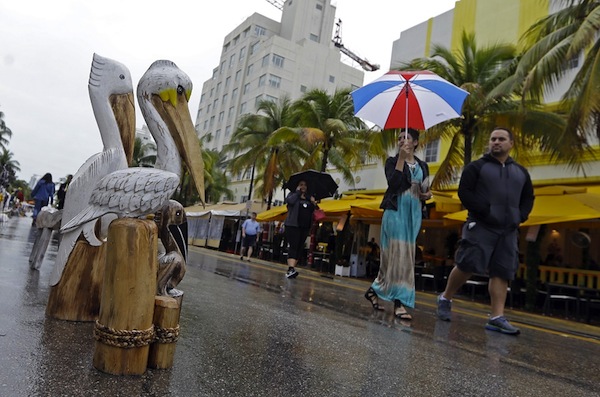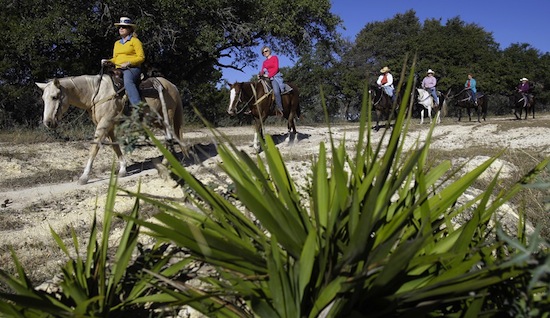You may be focused on retiring in Florida, but that doesn’t mean that if you work there, you’ll be ready to.
A report from the Pew Charitable Trusts, “Who’s In, Who’s Out: A Look at Access to Employer-Based Retirement Plans and Participation in the States,” analyzed how well employers in each state — and in different regions of the country — do at providing retirement plans for their employees and how well employees do at participating in them.
You might be surprised at what they found.
In Florida, for instance, long regarded as the retirement haven, both employers and employees do poorly; in fact, the state finished at the absolute bottom of the country, both in the percentage of its employers providing retirement plans to their employees and the percentage of employees who participate in plans.
Pew found that a major factor in how well employees are prepared for retirement isn’t just how much people save, or where they choose to retire.
It’s whether they have access to an employer-sponsored retirement plan in the first place.
If you don’t mind some gloom, here’s a look at the 10 states with the worst percentage of employer-provided plans and the lowest rate of participation.
 1. Florida
1. Florida
As mentioned above, Florida has the worst record of employers providing retirement plans — at just 46% — and it does even worse at employee participation, at 38%.
As they say in all the lottery commercials, you’ve got to be in it to win it — and most of Florida’s employees aren’t even in the game.
Of course, a lot can depend on how much people make; Pew also found that, across the country, only 32% of workers with wage and salary incomes of less than $25,000 have access to a retirement plan at the workplace.
It’s not altogether surprising that people trying to get by on so little find it hard to sock any of it away; just 20% of those in the lower-income group, according to Pew, participate in a plan, compared with 72% of more affluent workers.
 2. Nevada
2. Nevada
While 51% of Nevada’s employers provide retirement plans, only 39% of employees manage to take advantage of such a plan.
The low participation rate is made more interesting, if more depressing, by the fact that it has the lowest take-up rate in the country.
The take-up rate, Pew said, is “the percentage of workers who reported having access to a workplace retirement plan and were participating in that plan.”
Nevada’s is just 76%; compare that with Indiana, where 90% of those offered a plan manage to participate in that plan.
Not surprisingly, Indiana finished in the top 10, not the bottom.
 3. New Mexico
3. New Mexico
Only 49% of New Mexico’s employers provide a plan, and just 41% of employees participate in one.
Part of the low rate could be due to the fact that the state has the third largest number of employees working for small companies (those with fewer than 50 employees).
Smaller firms are less likely to offer retirement plans to their employees — and employees in Western states are more likely to work in small firms.
New Mexico also has the largest number of Hispanic workers, whose access to a retirement plan runs 25 percentage points behind that of white non-Hispanic workers.
 4. Arizona
4. Arizona
Another state with low plan offerings — just 52% of employers provide plans, and only 41% of employees participate in a plan — Arizona has the fourth largest concentration of Hispanic workers in the country.
In addition, it — along with New Mexico — is in the top 10 states with the highest percentage of employees in the leisure and hospitality industry, which does a pretty poor job of providing its employees with retirement benefits.
 5. Texas
5. Texas
An even 50% of Texas employers offer a retirement plan, but that leaves half Texas’s employees without one.
And only 42% of Texas workers participate in a plan.
Then there’s the issue of poor access to plans for Hispanics.
Not only are more than a third of the full-time private-sector workers in Texas Hispanic (nationwide the figure is 16%), but while 63% of white non-Hispanic workers had access to an employer-sponsored retirement plan, only 38% of Hispanic workers said they had access to one.
 6. Louisiana
6. Louisiana
While 53% of Louisiana’s employers offer a plan, just 44% of Louisianans report participating in one.
Pay is likely a major factor here, since Louisiana has the second-highest percentage of workers with less than $25,000 in annual wage and salary income.
Only Arkansas has a larger percentage of workers bringing in such low pay.
According to Pew, salary can be an indicator of “job quality,” with low-salary jobs “tend[ing] to be in sectors where employers are less likely to offer pensions or retirement savings plans.”
 7. California
7. California
Fifty-one percent of California’s employers offer retirement plans, and 44% of the state’s workers report participating in a plan.
While it might be surprising to find that a state known for many progressive actions has such a low penetration rate of retirement plans, California has the second-largest population of Hispanic workers in the country.
In addition to the fact that Hispanic workers have less access to retirement plans, there’s also a cultural factor to consider.
The Pew report said that “research suggests that some Hispanics are reluctant to participate in retirement savings programs because of uncertainty about the accessibility of funds if they retire in another country.”
 8. Georgia
8. Georgia
A greater percentage of Georgia’s employers — 53% — offer their employees access to a retirement plan.
And 45% of the state’s employees participate in one. And the state ranks either a little above or a little below the median in most of Pew’s rating categories.
But somehow that hasn’t translated to providing more of its workers with a means to retire — after all, less than half of its people participate in an employer-sponsored plan.
So it’s probably a good thing that, at least, Georgia is one of the 10 most tax-friendly states for retirement; it will make those small balances go a bit further.
 9. Arkansas
9. Arkansas
Fifty-five percent of the state’s employers say they provide their employees with a retirement plan, and 45% of its employees say they participate in one.
But that doesn’t mean everything’s a natural in the Natural State; in fact, capital city Little Rock was ranked as one of the 10 worst places to retire by Bankrate.com, with high taxes just one way for the state to take a bite out of whatever retirement money people have managed to save.
In addition, 28% of the state’s employees have an annual wage and salary income of less than $25,000, which makes it tough to put away anything for the future.
The state also has the six-largest percentage of workers under age 30.
Pew said that younger workers frequently have a tough time even thinking about saving for retirement when there are so many other financial claims on their money — student loan debt in particular.
 10. New Jersey
10. New Jersey
It might be surprising in a state considered so metropolitan, but New Jersey made the bottom 10 with 53% of its employers providing a retirement plan and 47% of its employees participating in one.
But retirement isn’t one of the state’s major priorities — at least not for its governor, Chris Christie, who conditionally vetoed a bill from the state legislature that would have mandated a new retirement program for employers who don’t currently provide one.
Instead, Christie amended the bill to create a marketplace for private-sector providers that will not require participation, but will only promote it.
New Jersey is also known — by no less an authority than Moody’s — for having the lowest pension funding for state plans of any in the country. So perhaps it’s not a surprise after all.
© Touchpoint Markets, All Rights Reserved. Request academic re-use from www.copyright.com. All other uses, submit a request to [email protected]. For more inforrmation visit Asset & Logo Licensing.






